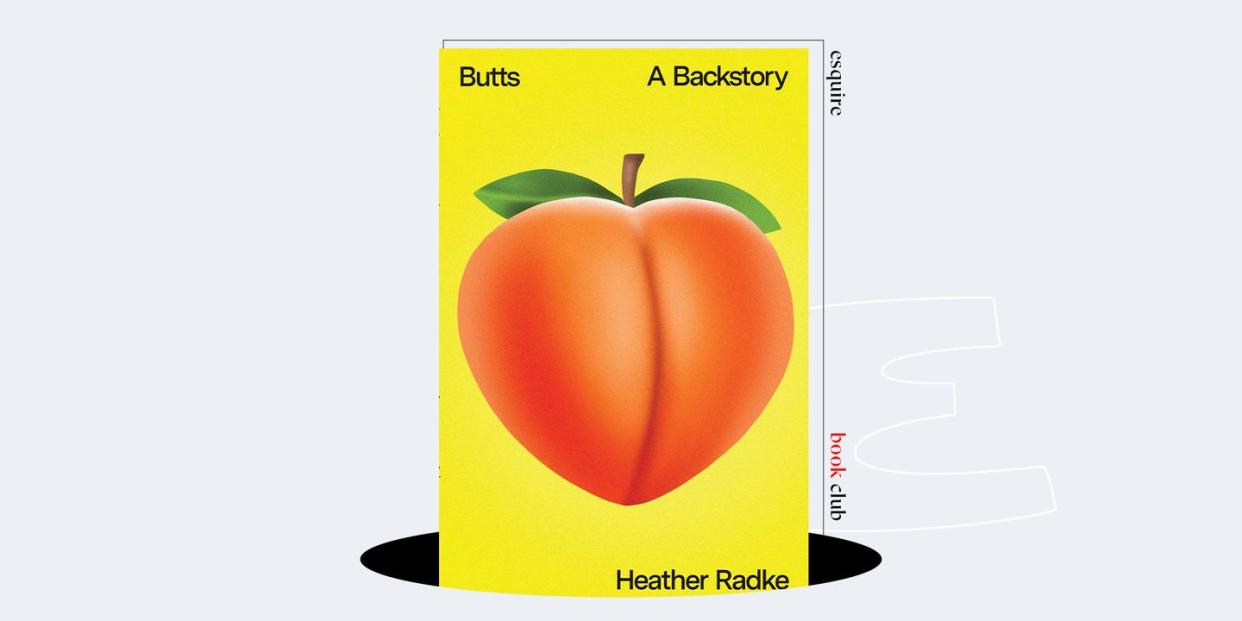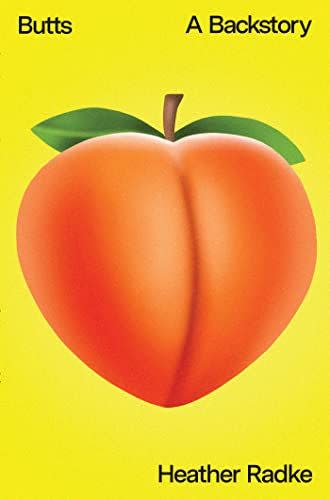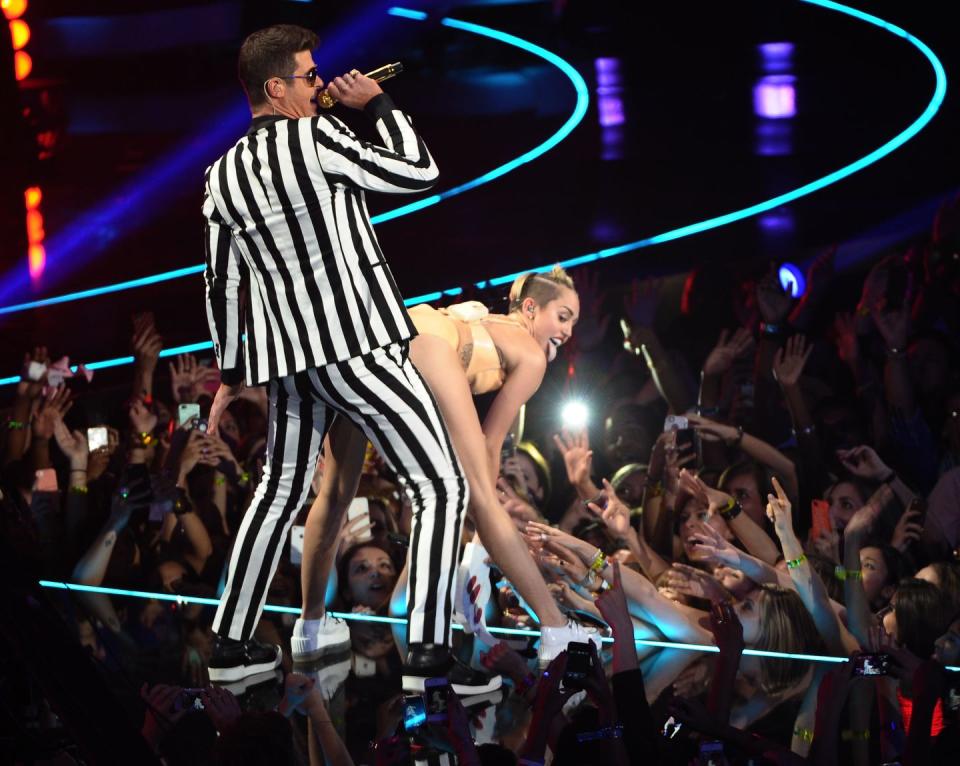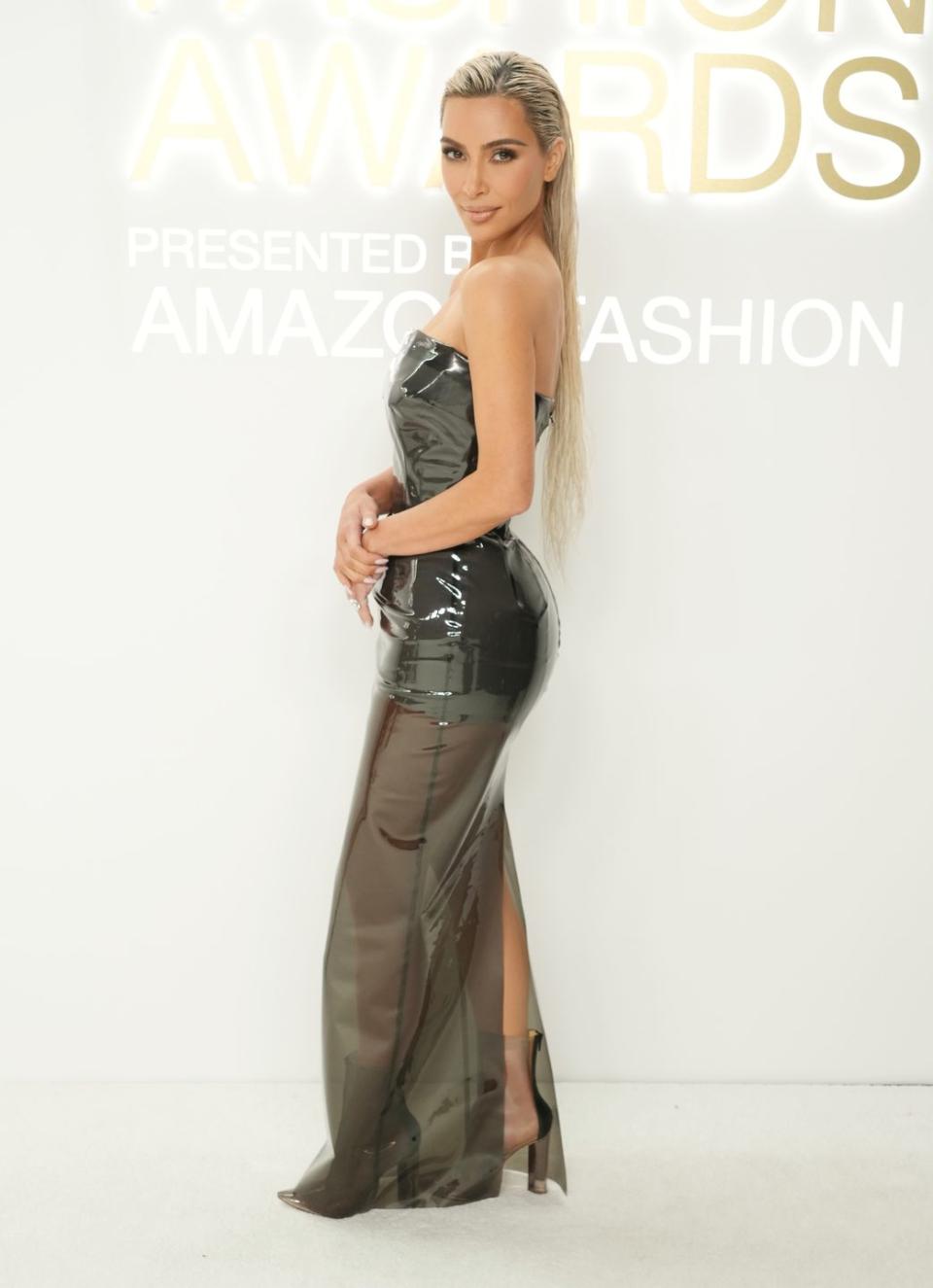Why Are We So Obsessed with Butts?

"Hearst Magazines and Yahoo may earn commission or revenue on some items through these links."
"Everyone has a different origin story for how they feel about their adult body," says journalist Heather Radke. For many women, that origin story begins with their butt, that most symbolic and attention-grabbing of female body parts—always too big, too small, too flat, too flabby, too wrong. But just how did we arrive at this moment in human history where women’s rear ends have become a cultural obsession?
In Butts: A Backstory, her wildly entertaining debut, Radke goes in search of the answer. This crackling cultural history melds scholarship and pop culture to arrive at a comprehensive taxonomy of the female bottom. From 19th-century burlesque to the eighties aerobics craze to Kim Kardashian’s Internet-breaking backside, Radke leaves no stone unturned. Her sources range from anthropological scholarship to Sir Mix-a-Lot’s "Baby Got Back," making for a vivacious blend of science and pop culture, but Butts isn’t all fun and games (even if the section about 19th-century fart parlors is really fun).
Radke explores how women’s butts have been used “as a means to create and reinforce racial hierarchies,” acting as locuses of racism, control, and desire. It all began with Sarah Baartman, Radke explains, a South African woman taken to London’s Piccadilly Circus in 1810, where she was exhibited in front of spectators who paid to view (and pinch) her large butt. As for where it all ends, no one knows, but Radke has high hopes for the body neutrality movement. "It would be great if our bodies could just be facts instead of symbols, but instead, we treat them like metaphors," the author tells Esquire.
Lively and thorough, Butts is the best kind of nonfiction—the kind that forces you to see something ordinary through completely new eyes. Radke Zoomed with Esquire to take us inside the book, from the problems with specious butt science to the shocking realities of the garment industry. This conversation has been edited for length and clarity.
ESQUIRE: The book opens with the story of Sarah Baartman. You write, "The story of Sarah Baartman is important not only as a troubling tale of a large-butted woman who was mistreated in the early 19th century, but because of the many ways her life, display, and dissection have remained relevant across the centuries." How does the legacy of Sarah Baartman still remain with us?
HEATHER RADKE: In a really straightforward way, you can see the legacy of Sarah Baartman referenced throughout the 19th and early 20th centuries. So-called "racial scientists" of the 19th century, who were more or less inventing racial categories and racial hierarchies, often used her autopsy report as evidence that people from Africa were less human than people from Europe, and that African women were more highly sexual than white women. Her body was on display in Paris into the 1980s, then it was displayed again in the 1990s. It’s a history that's very near.

Butts: A Backstory
$20.49
amazon.com
Europeans saw her body and used it as a symbol to create racial stereotypes. We see that well into everyday life today. The stereotype that Black women are more highly sexual remains; we see it all over the place. Thinking people know it’s not true, but it's baked into the way we think about racial stereotypes. There’s also this idea that big-butted women of any race are more highly sexual. We see this in articles with headlines like, "Why Men Like Big Butts.” Those articles suggest that big-butted women are more fertile or more sexually potent than women with smaller butts. All of this comes from the legacy of an idea about big-butted women, and about Black women, that was formed out of what happened to Sarah Baartman in the early 19th century.
There’s a cottage industry of junk science about butts. What would be a responsible way to cover butts in the media?
I'm a reporter at RadioLab, so I think a lot about science and how to talk about science in public. To me, some of the most interesting questions are the ones we can't know. There's this desire to make evolutionary arguments about human bodies. I get it—in order to understand who we are now, we want to understand who we were on the savannah, but there's so little we can know about that. We can study muscles, because muscles leave an artifact behind on bone. When you find a bone, you can learn how the muscles worked on an ancient hominid. But with fat, hair, and soft tissue, we have no historical records, so it’s difficult to know how much fat humans had at any point in the long-ago past. Did men have beards? Did women wear their hair long? In some sense, that’s unknowable. It’s not a very fun article to write, but it’s an interesting fact. There's a way we can manipulate science to justify stereotypes and unconscious biases in our lives, instead of taking responsibility for them or becoming curious about them. It’s important to be straightforward about what we can’t know. In fact, evolutionary biologists are pretty comfortable with that.
I was so impressed by the breadth and the depth of the research in this book. What did you learn in the course of all this research that most surprised you?
I interviewed Abigail Glaum-Lathbury, a fashion historian and historian of clothing sizes. When she explained to me how sizing basically doesn’t work, I called her back three times to say, "Abigail, I just don't get it. Why wouldn't they try to fix it? How is this a functioning industry?” She finally said, "It's not that they don't want it to work; it's that it can't." Humans are too varied and garments are an industrial product. They can't make clothing that fits every single person at that scale, so they just do what they can. Of course that’s true. But why don’t we all know that’s true? Why does it feel when you go in the dressing room like, "There's something wrong with my body that doesn't fit these clothes." Instead of what's actually true, which is, "There's something wrong with these clothes that don't fit my body." The problem is in the seams of the clothes. They can't make clothes that are going to fit you. It truly blew my mind. Abigail thinks I'm so funny because I kept saying, "Can we talk about this one more time? I really don't get it."
Is there a similar problem going on in men's sizing?
Men’s clothes fit better because they’re based on measurements. When a man buys pants, the size corresponds to an actual measurement on his body—the size around his waist. Men’s clothes are also easier to fit than women's clothes because women have more fat on their bodies and it's distributed in ways that are less predictable. Breasts, butts, pregnancy—it’s hard to make clothes that can accommodate that level of variation. Men’s bodies are highly variable too, but they’re a little bit less varied in that specific way. The garment industry solved the problems with men's sizing almost a hundred years before they even made any meaningful strides in solving the problems of women’s sizing—although they obviously never solved the problems of women’s sizing. In the early 20th century, men went off to war, and they had to manufacture uniforms for all of them. Figuring out how to clothe all these men at once became a governmental problem, so there’s something to be said about that.
What do you hope that men take away from this book?
I've actually had a lot of male friends read it in drafts. A lot of men have been surprised about how complicated women's relationships with their bodies can be. Some of these histories, like that sizing history, really surprises a lot of men. I did a RadioLab episode about it with Latif, one of the co-hosts. He didn't even know that women's sizing was like, 4, 6, 8, etc. I’m always surprised at how some men don't know the many ways that women are always reckoning with their bodies. We're always being told how to feel about our bodies. I feel so aware of how people might be thinking about my body. I’m aware of how I'm thinking about my body at every given moment. I'm sure some men know this. But there's this truth that so many women are just walking around, constantly having a narrative about how their bodies are being perceived. This book, I hope, gives some historical context to that feeling. I hope it challenges men to see just how deep and complicated and intense it can really be.

The book challenges us to dig deep about all the ways that women's butts have been "used as a means to create and reinforce racial hierarchies.” How should white women be thinking about that and acting conscientiously as they move and scroll through this butt-obsessed world?
The thing that I would say, and the thing that I'm trying to do myself, is to ask yourself why you're having that relationship to those images. Maybe you find them disgusting. Why disgust? Maybe you're intrigued and excited by them. Why are you intrigued and excited? What are you hoping to get, and what are those pictures doing for you? We all have butts. It's not like butts are inherently racialized, but history has made it so that big butts, in particular, have a racial connotation. It’s our job as white people to be aware of our relationship to that history, and to be thoughtful about what we're wanting when we want to have a big butt, or what we're wanting when we want to have a small butt. What are you moving towards and what are you moving away from? We have to make some of those unconscious desires conscious for ourselves, so that we can then act in a way that's ethical and thoughtful and kind to other people's bodies.
I’m reminded of what you write in the conclusion about how "instead of turning away, we should turn toward.” That's a useful framework.
It can be a way of understanding ourselves. It can be joyful and even funny. It doesn't have to be shameful and punitive. I wrote a 250-page book about butts. It wasn't always fun, and I had to really reckon with parts of myself while doing it, but sometimes, it was extremely fun.
What do you make of recent headlines saying that big butts are out, and “thin is in,” once again?
This is just how fashion works. If the thing gets big, it's got to get small, because fashion is part of capitalism. Capitalism depends on newness and the mechanics of it get bored very quickly. If butts were in for twenty years, they've got to be out eventually. But the thing is, I don't think thin was ever really out. The last ten or fifteen years have been a time of a certain type of body acceptance, but it's also been a time of policing of women's bodies, as it has been since time immemorial. A certain woman with a certain butt is allowed, but not all big butts are celebrated. Not everybody can buy any clothes and they all fit. Not everybody feels great about their bodies. If you were thin with a big butt, that was cool. But now, that's not really the case for many people; that’s a pretty unusual body type that was, for a lot of people, created through surgery.

The other thing we have to consider is the symbolism of the thin woman. Some articles say this moment is a throwback to Kate Moss, but I actually think it seems much more like a throwback to Paris Hilton, Callista Flockhart, and the Friends actresses of the late '90s. It’s not a particularly rebellious imagery—it’s much more about being wealthy and in line with the fashion industry. All of it is still about several industries trying to control women, as has been true for a very, very long time. The roots of it go back much further than the 1990s. There's often a narrative about the 1920s along the lines of, "Women stopped wearing corsets and found freedom." But Valerie Steele argues that instead of having a corset control their bodies, women were asked to control their bodies themselves through things like fad diets. The bathroom scale and plastic surgery were invented during this period. For at least a hundred years, there's been this emphasis on women disciplining their own bodies instead of using something like a corset to control how they looked. To me, this “trend” is just another iteration of that.
When do we get to body neutrality?
Lots of exciting activists have been pushing for that. It seems pretty hard to get to neutrality, though there are parts of our bodies that are relatively neutral, like elbows or knees. Maybe not for everyone, but they certainly don't carry the symbolism of breasts or butts. I think that would be great if our bodies could just be facts instead of symbols, but instead, we treat them like metaphors. They come to mean so many different things, and often we're not totally aware of what those meanings are.
In the butt news-sphere, there’s been a lot of conversation about the Kardashians possibly removing their BBLs. You quote Toni Morrison’s phrasing, “playing in the dark,” to describe white women like Miley Cyrus and the Kardashian sisters donning and removing bigger butts. What do you make of this news about the Kardashians?
There are plenty of these accusations about the Kardashians. Through adjacency to Blackness, they’ve tried to benefit financially and culturally. It’s interesting to think that they might then be taking it off. It's a real power move that white women pull, and white men do it too. To be able to put something on and then take it off is to say, "I have ultimate control. I can have it when I want and I can be done with it when I don't want it anymore." To "play in the dark,” as Toni Morrison says, is to reinscribe the stereotypes of Blackness and the stereotypes of white femininity, which are stereotypes of innocence and purity that can be harmful for everyone involved. It's definitely a gesture I’ve seen throughout the history of butts that I researched. It’s something I found really troubling and definitely very present. I wouldn't be surprised if that's at least part of what's going on with that.
What part of writing and researching this book brought you the most joy?
The two parts of the book that I really enjoyed researching, and that I was really excited about, were the parts where I talked to the guys who make butt pads for drag queens and the women who became fat fitness activists. There are so many ways bodies can be controlled. It was exciting to meet people who had found ways to feel liberated inside their bodies and to resist some of that control. The aerobics activists in the 1980s identified as fat women. They wanted to move their bodies and enjoy the parts of the aerobics revolution that were fun and meaningful for a lot of people, but they didn't feel included in the world of Jane Fonda and Greg Smithy. They were excited to get together, play fun music, and find ways to move around and feel good about their bodies. There’s a lot of inspiration in that. Although the history of bodies is always going to be a history of control, there are a lot of people who have been able to find liberation, too.
You Might Also Like
